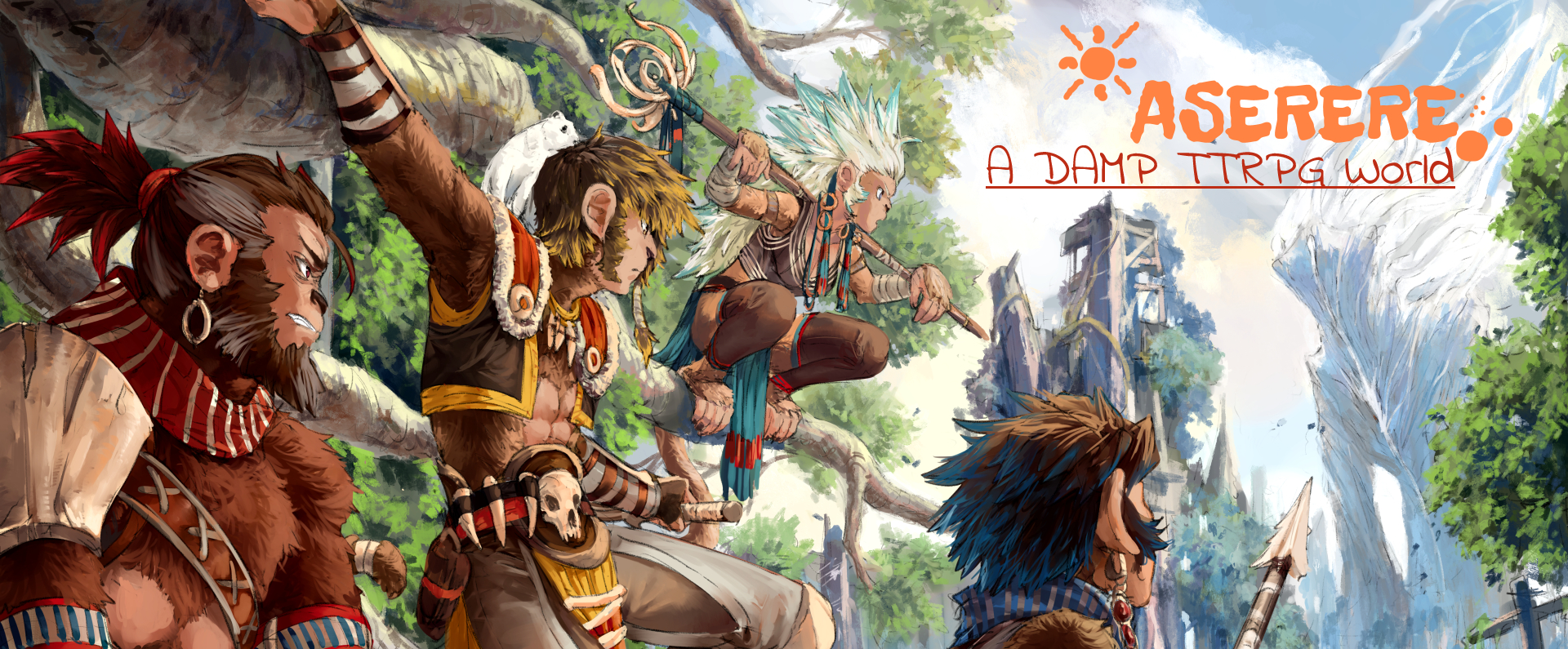Tribes of Kinnitak-Ujagak
There are 5 unique tribes of the larger kinnitak-Ujagak in Ijuguk-Piguttuk-Mik. All have found a way to avoid the dangers of the Corpse Flower and are know as a hardy, wise people able to make the most of a harsh land. There are fewer Akoko ruins in Ijuguk-Piguttuk-Mik and the ones that exist are remarkably intact though they seem very dissimilar from Akoko ruins elswhere, implying that even the ancient First Ones found living in the frigid tundra challenging.
The five tribes are:
Kinitak-ujaga weapons are unique in that in addition to bone and other metals found across Aserere, they have many weapons made from Layrinite, a rare mineral that only seems to occur in Ijuguk-Piguttuk-Mik.
The five tribes are:
- Kulugiak
- Kukiutik
- Ipittuksik
- Savitsuk
- Angakkuk
Kinitak-ujaga weapons are unique in that in addition to bone and other metals found across Aserere, they have many weapons made from Layrinite, a rare mineral that only seems to occur in Ijuguk-Piguttuk-Mik.
Naming Traditions
Feminine names
Ahnah, Alasie, Amka, Isapoinhkyaki, Kireama, Nanurjuk, Ticasuk, Uki
Masculine names
Amaqjuaq, Nootaikok, Pana, Panuk, Silla, Tekkeitsertok, Torngarsuk, Tulok, Yutu
Unisex names
Adlartok, Aput, Kallik, Nanurjuk, Nukilik, Siqiniq, Tehoronianhen, Tootega, Umiaktorvik, Yuka, Yura
Family names
Family names are formed as: Birth Order + Child of + Tribe + Grandmother's Name + Mother's Name
For example: Sivullik Sugusik Savitsuk Siqiniq Nanurjuk mean First Child of Savitsuk, Grandmother Signiq and Mother Nanurjuk
Culture
Common Etiquette rules
Family is very important to the Kinnitak-Ujagak, particularly matrilineal lines as it is believed that maternal spirits watch over the tribes while the paternal spirits keep the Corpse Flower at bay and fight the dead warriors that protect it's grotto.
Birth & Baptismal Rites
When a child is born, the tribe hunts an animal with strength and baths the newborn in the blood and invites the animal to become the child's protecting animal. The child is then made toys, bedding, and blankets of the animal to further strengthen the tie.
If a suitable animal cannot be found, the child is give regular baths of the menstrual blood of the maternal tribe members and gifted scrimshaw of various animals carved by the women.
| Guardian Animal | Benefits | Drawbacks |
|---|---|---|
Coming of Age Rites
Girls and boys are not adults until the tribe leaders see fit to award the title. Adults must be able to care for younger and weaker tribe members and members with some disability will always be considered children of the tribe for the adults to care for. Many children become adults at between 14 to 16 and must then take up necessary tribe tasks lest they be exiled for being bad spirited and inviting danger to the tribe.
Funerary and Memorial customs
When a person passes, the entire tribe sings songs of mourning over the body, telling of the persons life so that they do not forget themselves in the after life. The closest family then removes the organs, meat and skin from the body, pack the parts in salt and packs them in jars to be carried by the family for a year. The remaining skeleton is dressed lavishly, wrapped in furs, and buried in the nearest tribal burial grounds. An Umoya Sage then ensure the spirit is pleased with its sending.
If the sage detects any disquiet they work to make the spirit calm either through amending the burial or by spending time to hear the spirit's sadness through. After a year, the family, opens the jar of meat, eats a piece while singing songs of memory, then sacrifice the remaining to sea or forest so that there may continue to be good harvesting for the living tribe members.
Encompassed species



